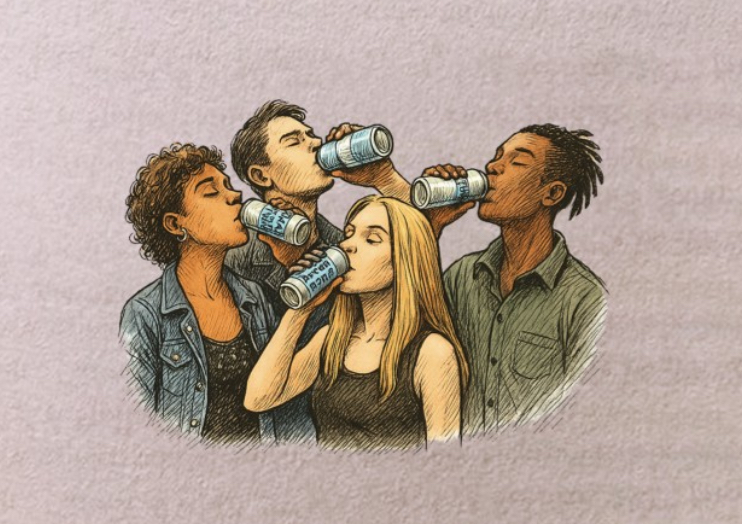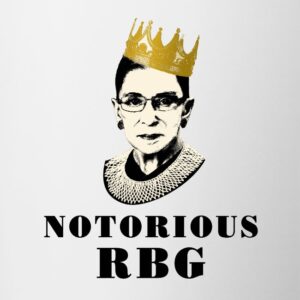In the gleaming world of modern marketing, where billion-dollar ad budgets, celebrity endorsements, and cinematic Super Bowl commercials dominate headlines, it’s easy to forget that some of the greatest brand empires weren’t built with glitz or polish. They were built with audacity, cunning — and often, a little bit of street-level theater.
Red Bull’s legendary guerrilla marketing stunt stands among the finest examples. It wasn’t the result of an agency brainstorm session or a viral TikTok campaign. It was something far simpler and far smarter: an understanding that in branding, perception often matters more than reality.
The brilliance of Red Bull’s early move lay not just in gaining attention, but in carefully engineering the illusion that they already had it. They didn’t ask consumers to believe. They made it seem as if everyone else already did. It was a lesson in social proof so perfectly executed that it helped transform a little-known Austrian startup into a multi-billion-dollar global juggernaut.
Setting the Stage: Red Bull in the Late 1980s
In the late 1980s, Red Bull was a nobody in a market that barely understood what an “energy drink” was. Inspired by functional beverages popular in Asia, founder Dietrich Mateschitz wanted to introduce the concept to European consumers. But he was facing an uphill battle:
- No budget to launch glitzy ad campaigns.
- No category awareness among consumers.
- No existing brand loyalty to lean on.
- Skepticism from regulatory bodies and distributors alike.
Most startups might have gone the traditional route: grassroots sampling, small media buys, and painstakingly slow awareness-building. But Red Bull recognized something fundamental about human behavior: people are more likely to desire what they believe others already value.
Rather than patiently explaining why consumers should try Red Bull, they asked: How can we make people believe Red Bull is already everywhere?
The Stunt: Crafting an Alternate Reality
Red Bull’s team embarked on one of the most low-fi but ingenious guerrilla campaigns ever executed. Their strategy was deceptively simple:
- Hand out free Red Bull samples — but not just anywhere. Strategic placement was key.
- Target DJs, influencers, and nightlife personalities — long before the term “influencer” even existed.
- Leave empty cans outside of nightclubs, bars, universities, and events — as if consumers had been drinking Red Bull en masse.
Soon, it wasn’t just about people tasting Red Bull. It was about people seeing Red Bull everywhere — without ever needing a single paid advertisement to tell them it was cool.
The city streets told the story. Overflowing bins of empty Red Bull cans. Sidewalks scattered with crushed reminders of “the drink everyone was having.” DJs holding half-empty cans in the booth. Bystanders assuming, without question, that Red Bull must be the drink of the moment.
It was marketing not by persuasion, but by implication.
The Power of Social Proof: Why It Worked
Red Bull’s guerrilla stunt wasn’t just clever — it was rooted in deep psychological truth.
Social proof is a phenomenon where individuals look to the behavior of others to determine their own. Especially in uncertain contexts — new product categories, for instance — people default to what seems popular as a signal for what must be good.
Red Bull leveraged this flawlessly:
- Empty cans became non-verbal endorsements.
- Scarcity and visibility created a sense of intrigue.
- Association with nightlife culture embedded Red Bull within an aspirational, youthful identity.
In a world where energy drinks were virtually unknown, Red Bull sidestepped the need for lengthy education campaigns. They allowed consumers’ imaginations to fill in the blanks. If everyone else is drinking it, it must be good. If it’s in the hands of cool people at cool places, it must be cool, too.
They didn’t have to say it.
The world, looking at the curated evidence, concluded it for them.
From Streets to Global Icon: The Aftermath
The perception Red Bull manufactured wasn’t a temporary illusion. It snowballed.
As word-of-mouth spread, actual consumption rose to meet the perceived popularity. Distributors started calling, not because they were convinced by corporate pitches, but because their customers were asking for Red Bull. Students, clubbers, athletes — the early adopters who craved identity markers — flocked to the brand.
By the mid-1990s, Red Bull wasn’t just a drink; it was a lifestyle emblem.
By the early 2000s, it was a global phenomenon.
Today, Red Bull controls around 43% of the global energy drink market and has extended its empire into media, extreme sports, and cultural content creation.
None of that would have been possible if not for the foundational illusion:
Red Bull didn’t wait to become popular. They acted popular — and then made it true.
Lessons in Perception: What Modern Brands Can Learn
The Red Bull stunt teaches lessons far beyond beverage marketing. It reveals profound truths about how brands are built today — and how perception management is often the real game behind apparent success.
Perception Precedes Reality
Consumers often take cues from social signals before forming their own independent evaluations. Appear popular first — then win hearts and minds.
Association Is Everything
Red Bull didn’t waste time trying to please everyone. They embedded themselves specifically within nightlife and youth culture — places of influence. Pick your associations wisely.
Authenticity Can Be Manufactured
The irony is that although Red Bull’s early presence was staged, it didn’t feel fake. The people who were handed cans genuinely enjoyed the product. Authenticity doesn’t always mean pure origin; it can emerge from creating the right environment.
Scrappy Beats Polished (Sometimes)
Red Bull’s early moves were messy, gritty, and grassroots — and all the better for it. Polished perfection can often alienate; scrappy energy feels human, urgent, real.
Control the Narrative Without Telling It
The most powerful narratives are the ones consumers tell themselves. Red Bull didn’t run ads saying, “We’re the best energy drink.” They let the streets suggest it, and people filled in the story themselves.
Ideologue
Today, Red Bull is synonymous with more than energy drinks — it’s linked to risk-taking, extreme performance, and cultural edge. But beneath the glitzy Formula 1 teams, cliff-diving events, and snowboarding championships lies the DNA of that first guerrilla stunt: the understanding that you don’t have to wait for reality to catch up to your vision.
You can create the environment, the perception, and the conversation that makes reality bend toward you.
No comments yet.








